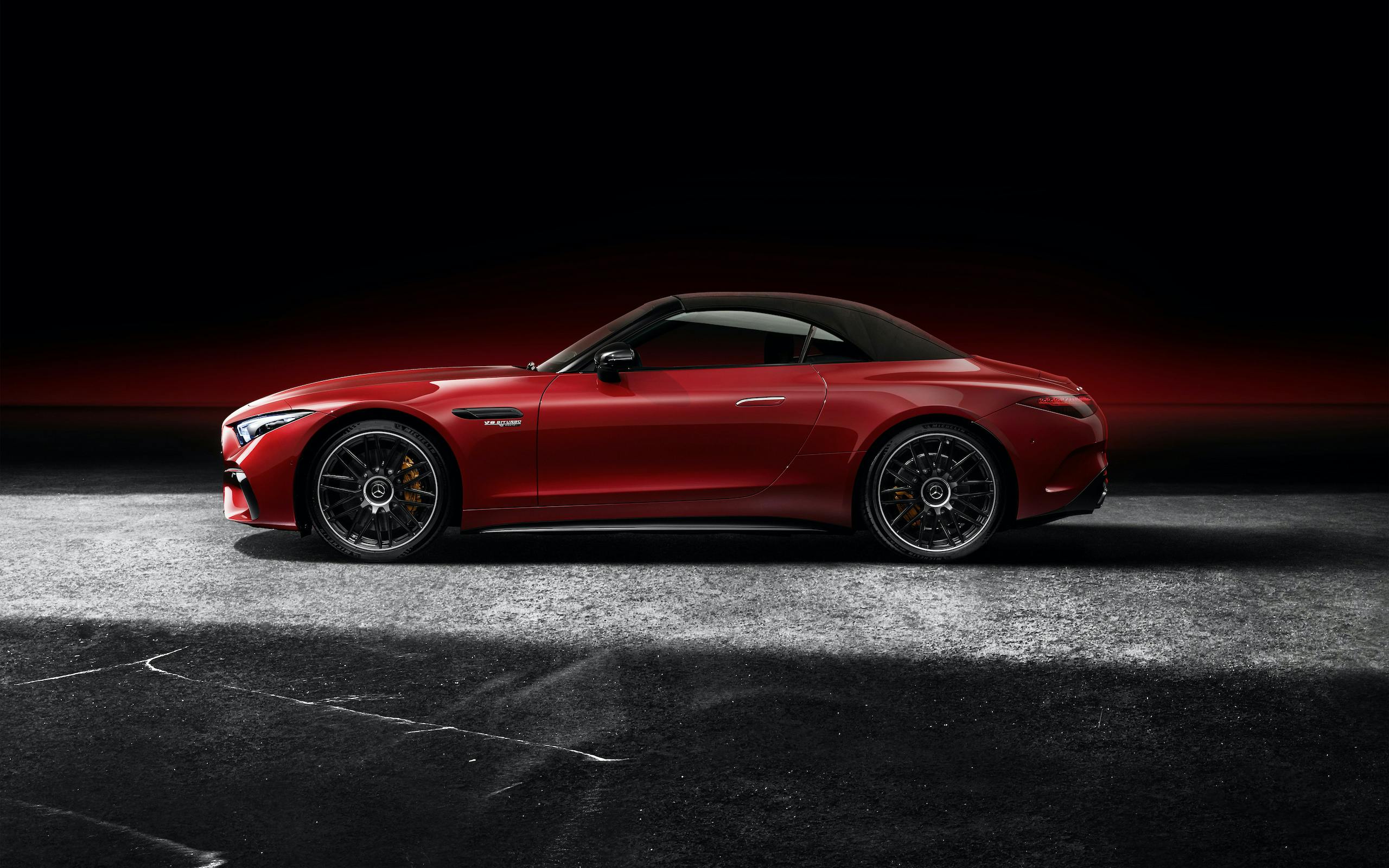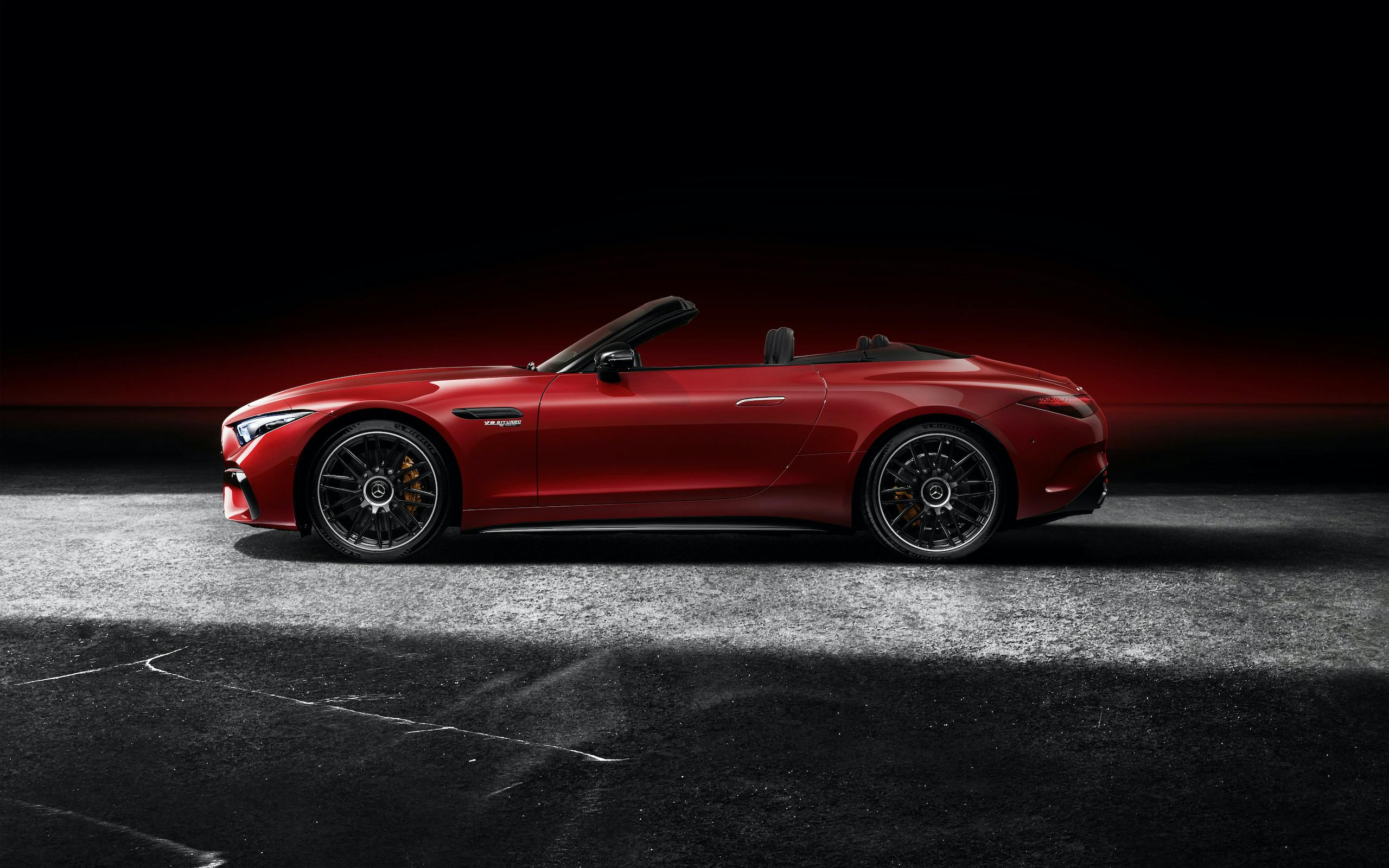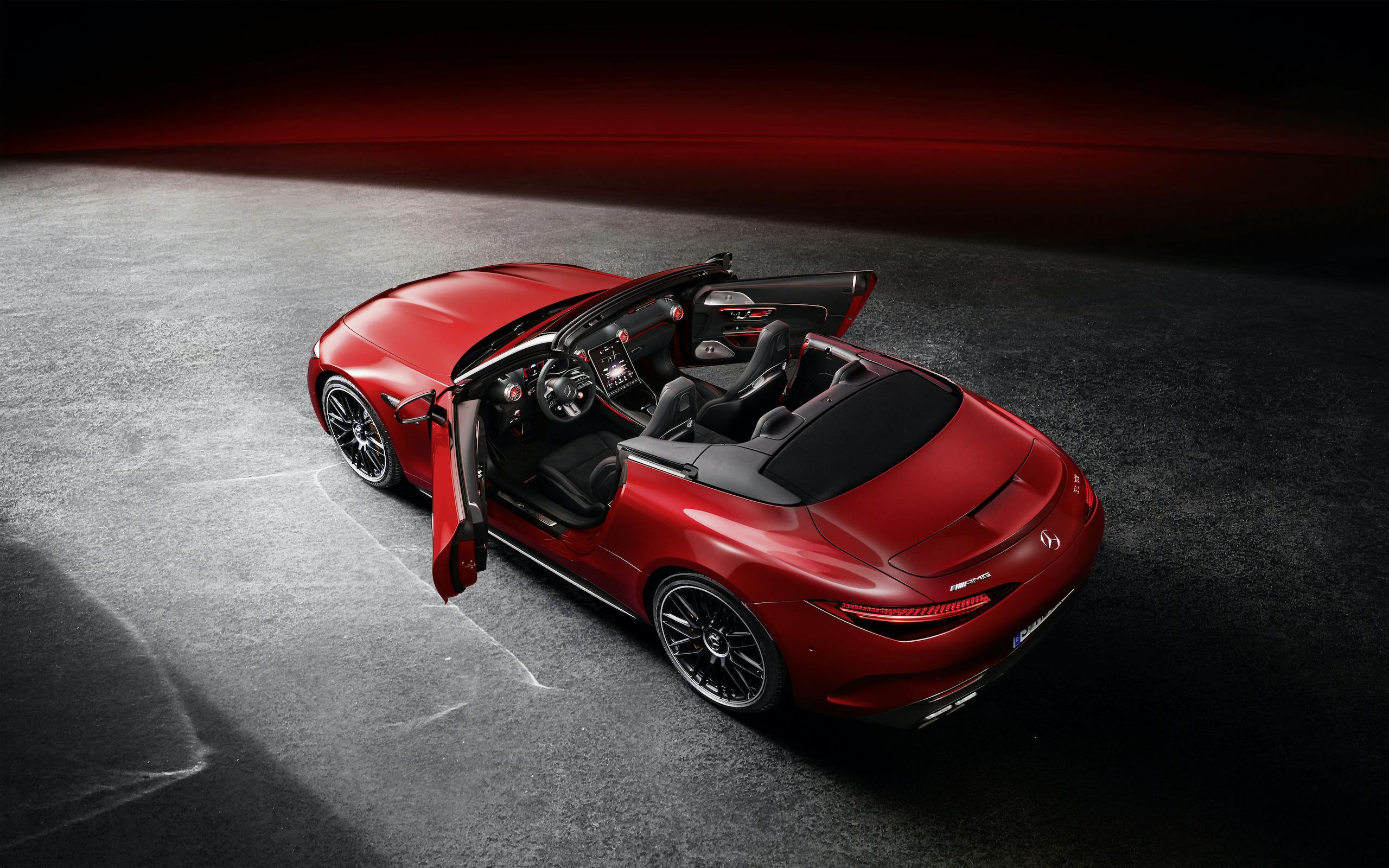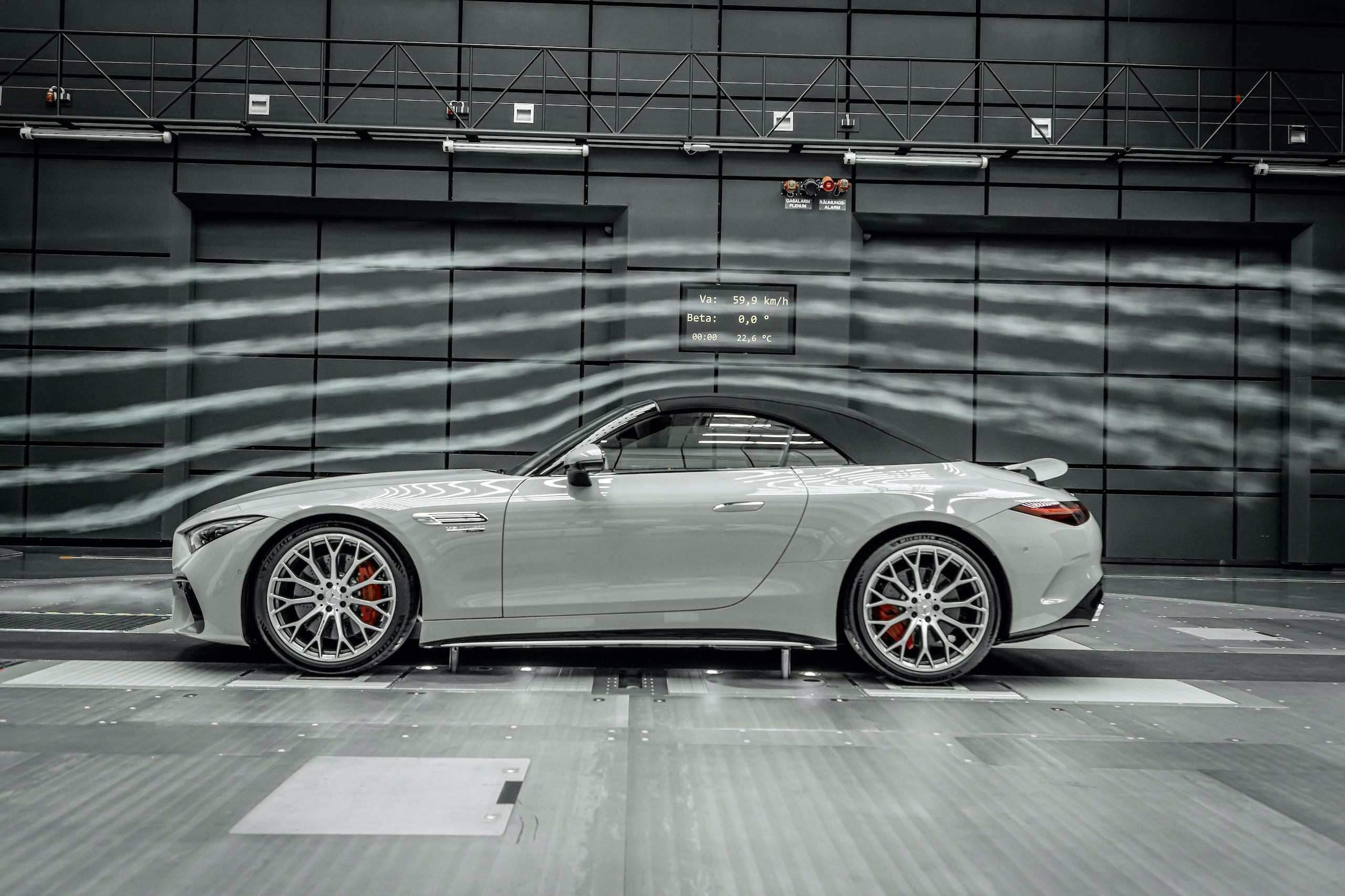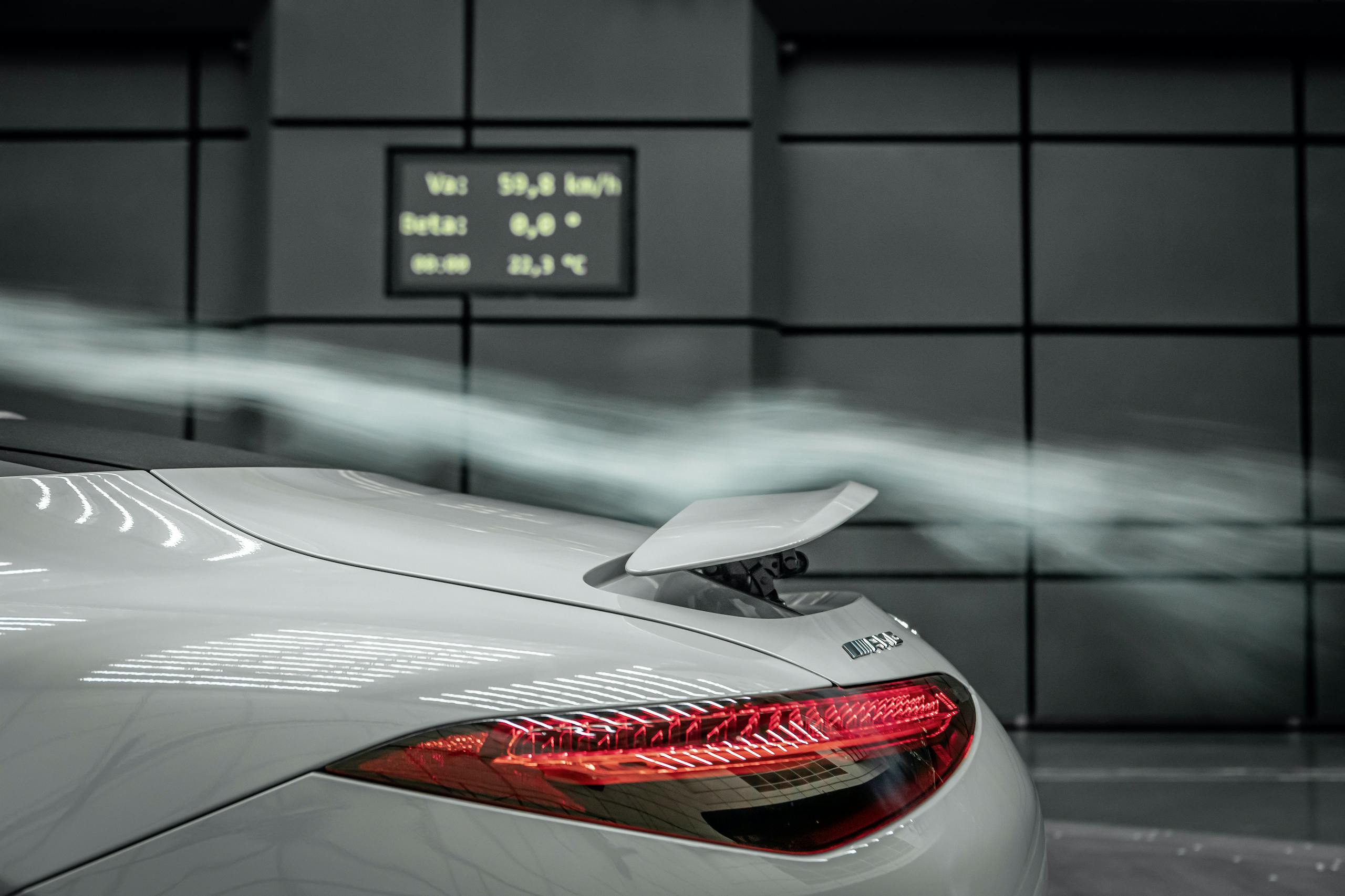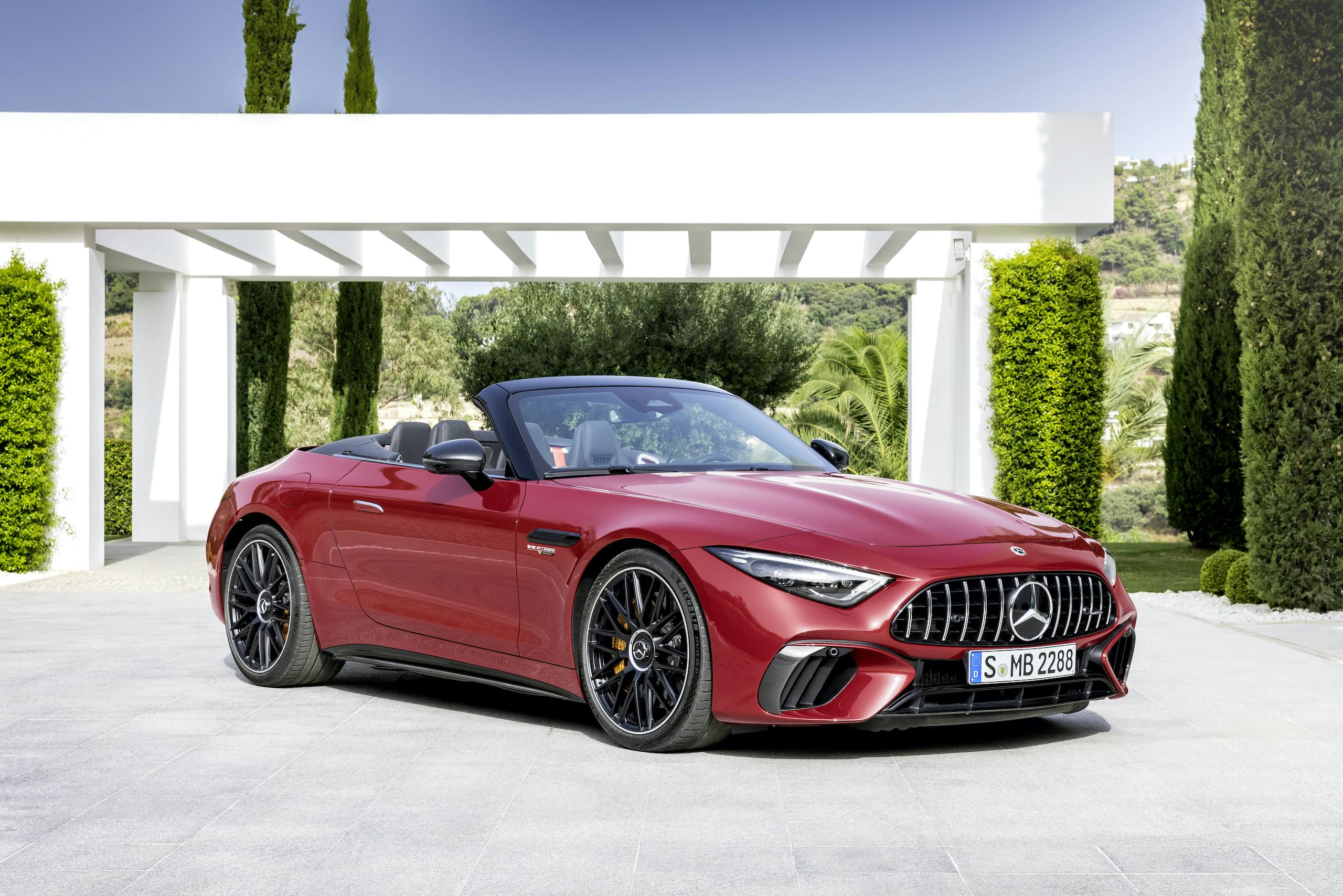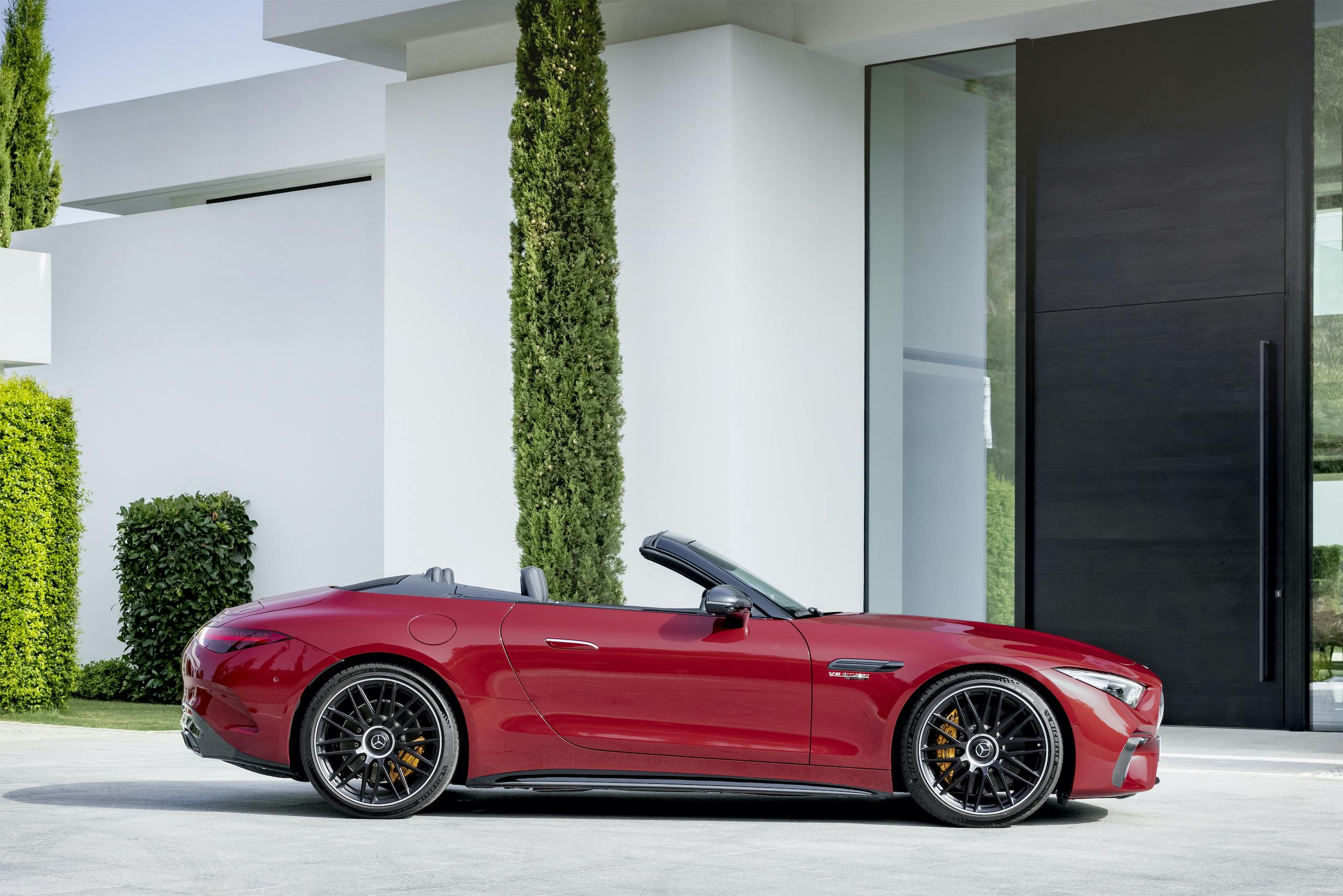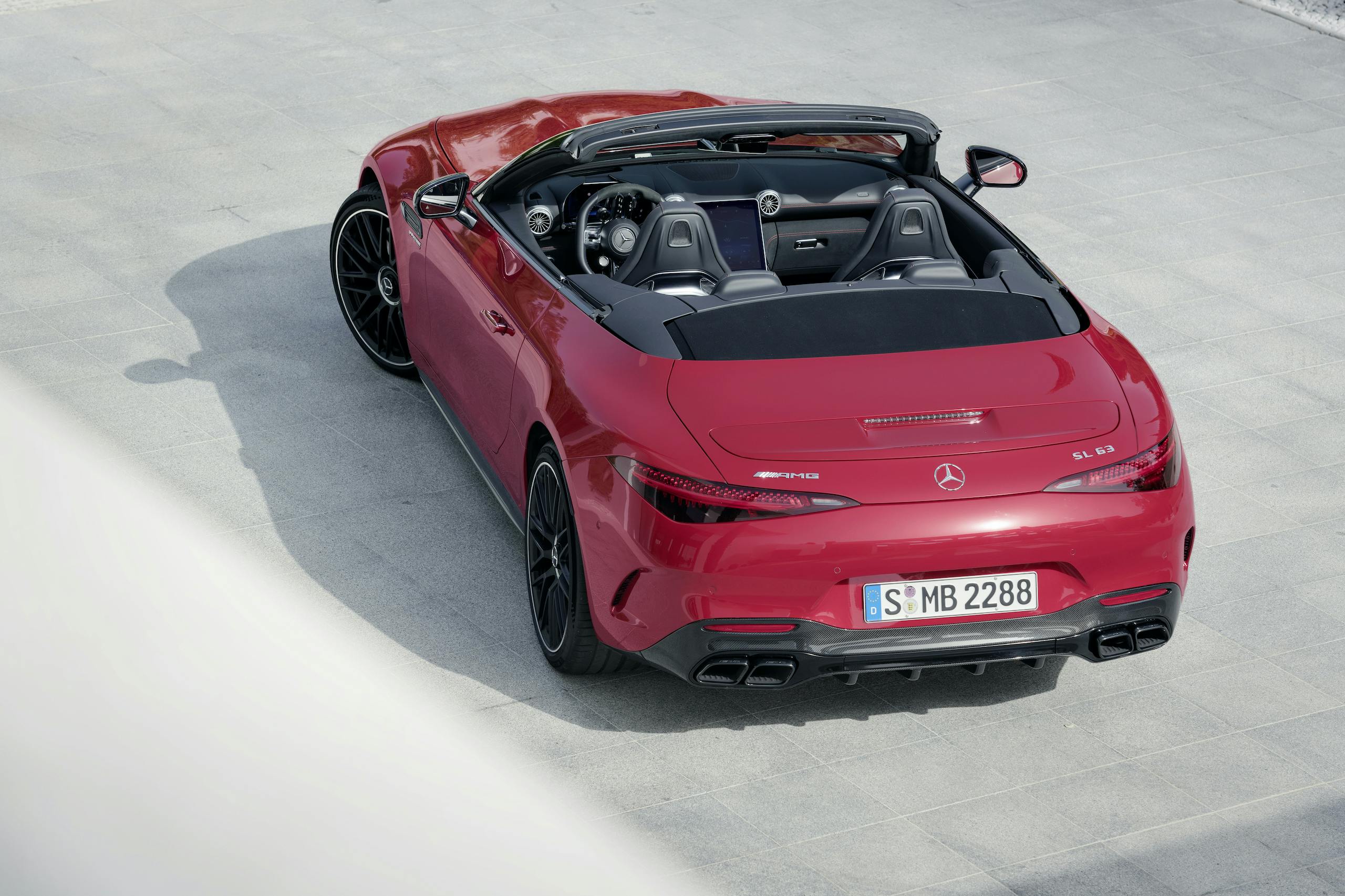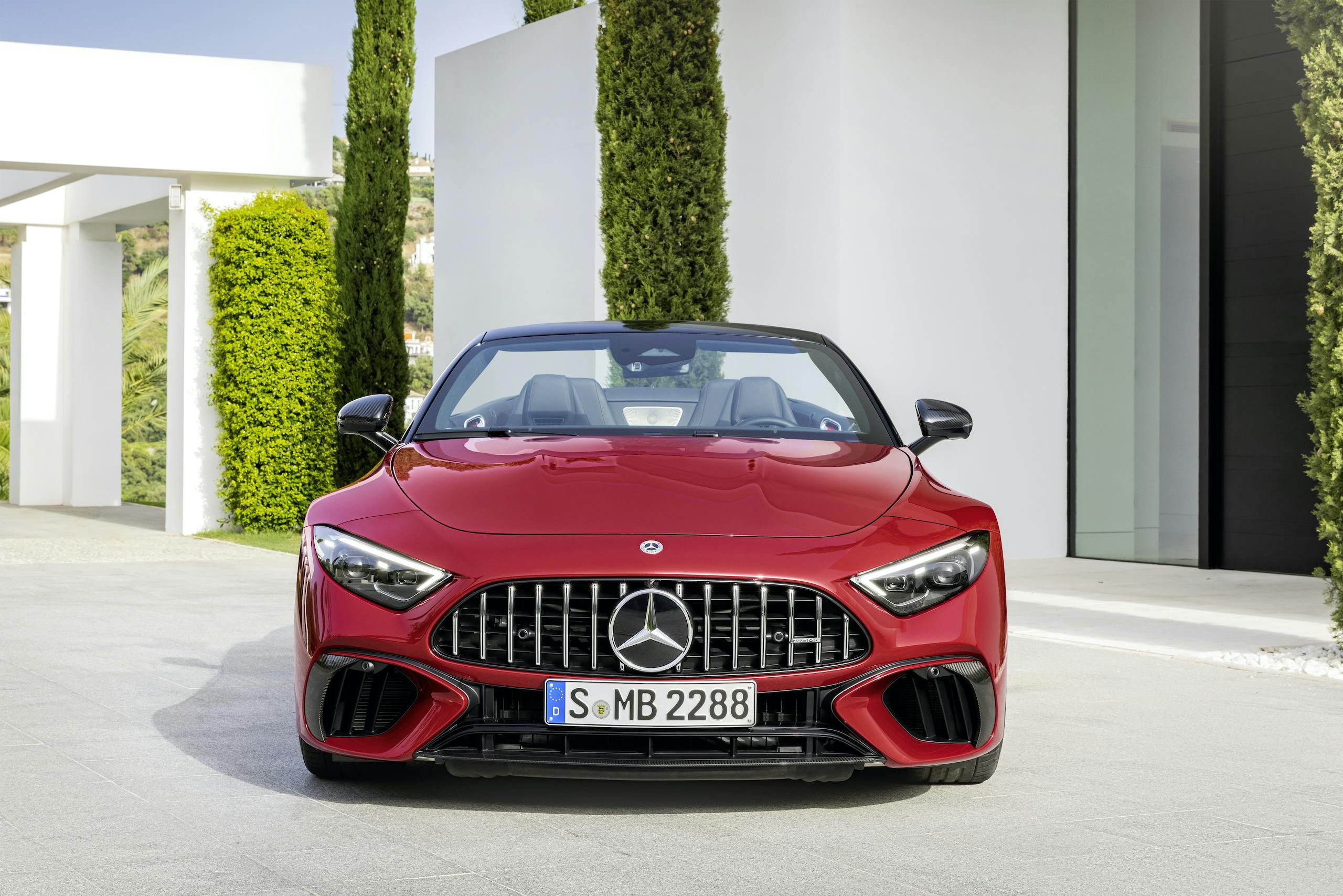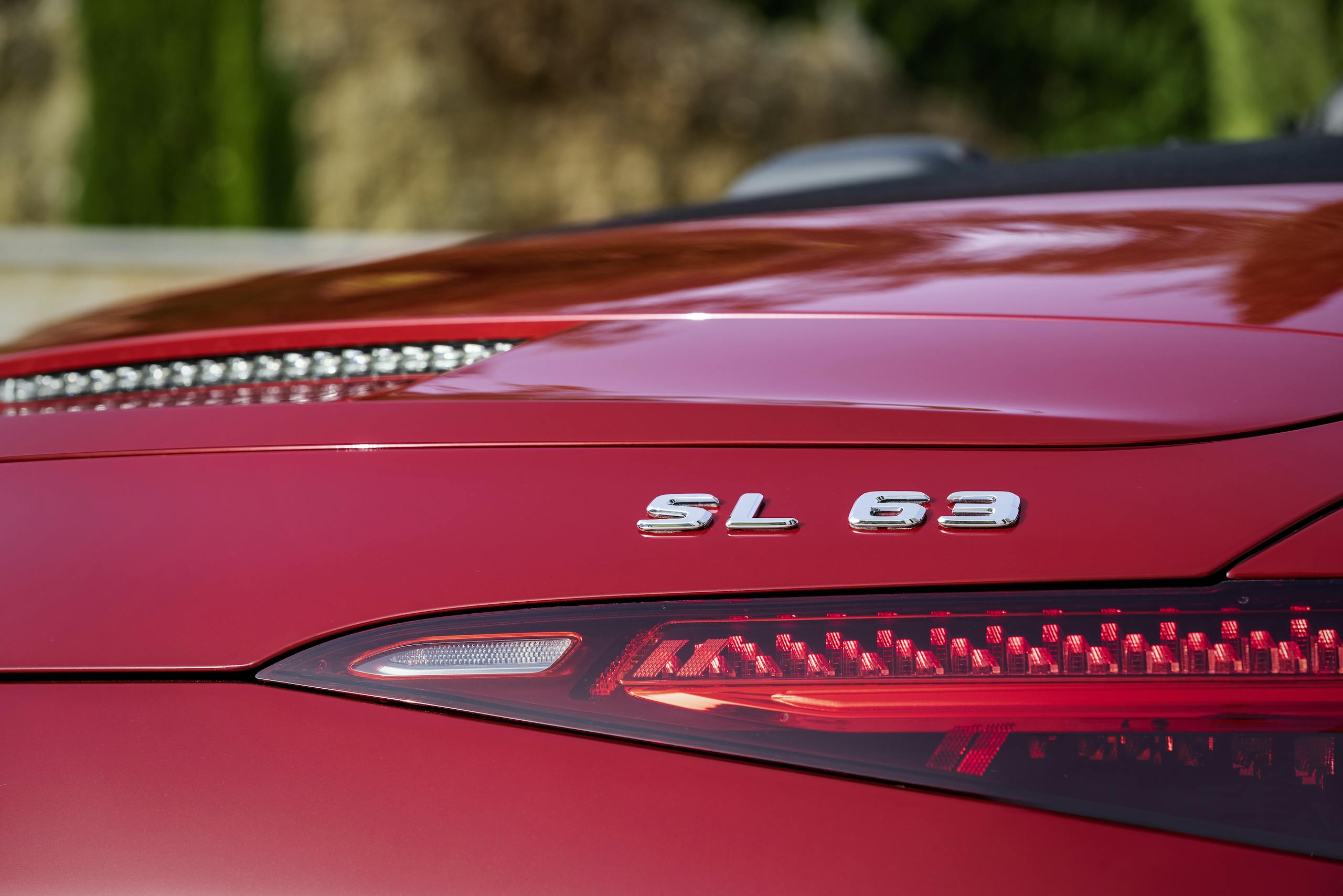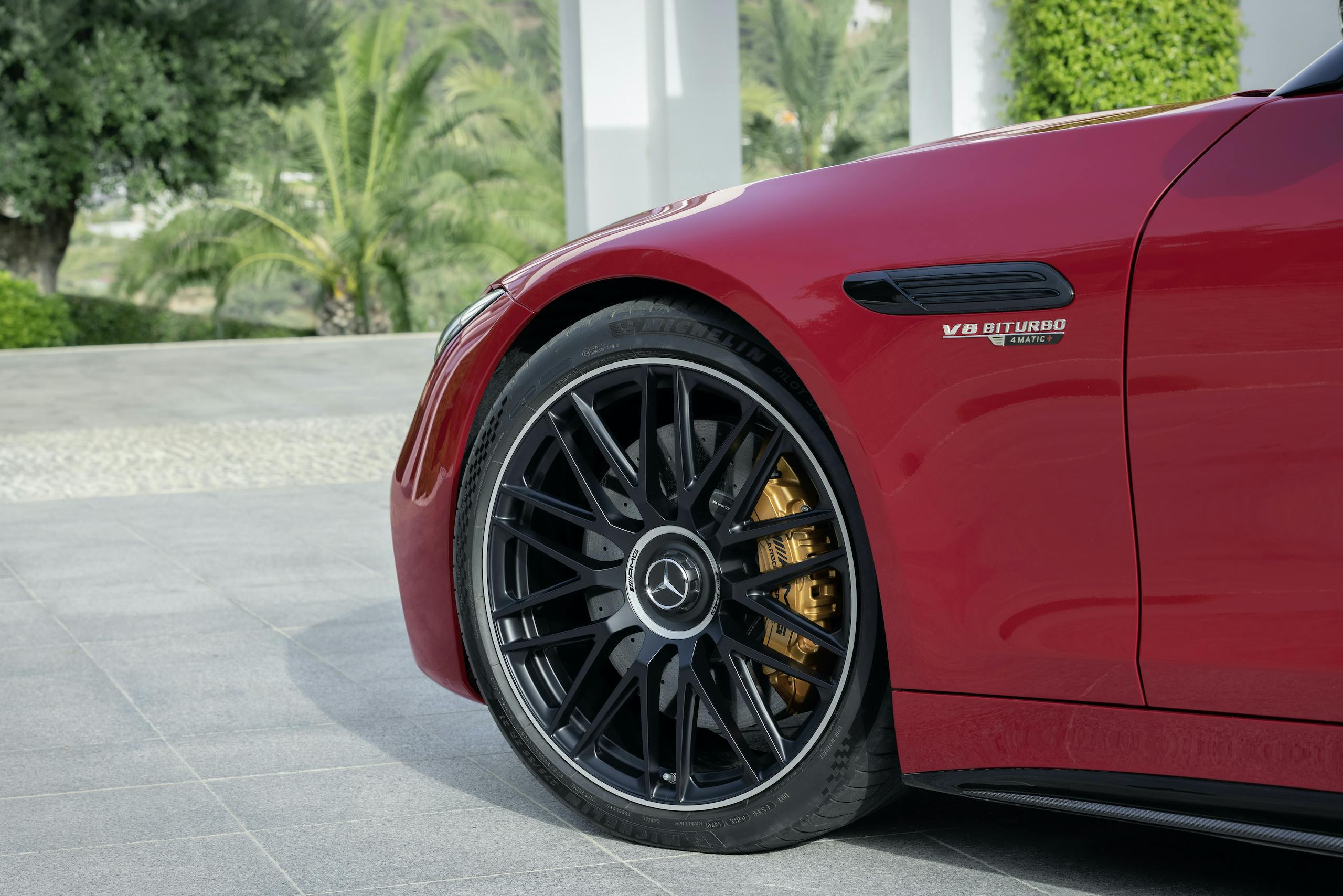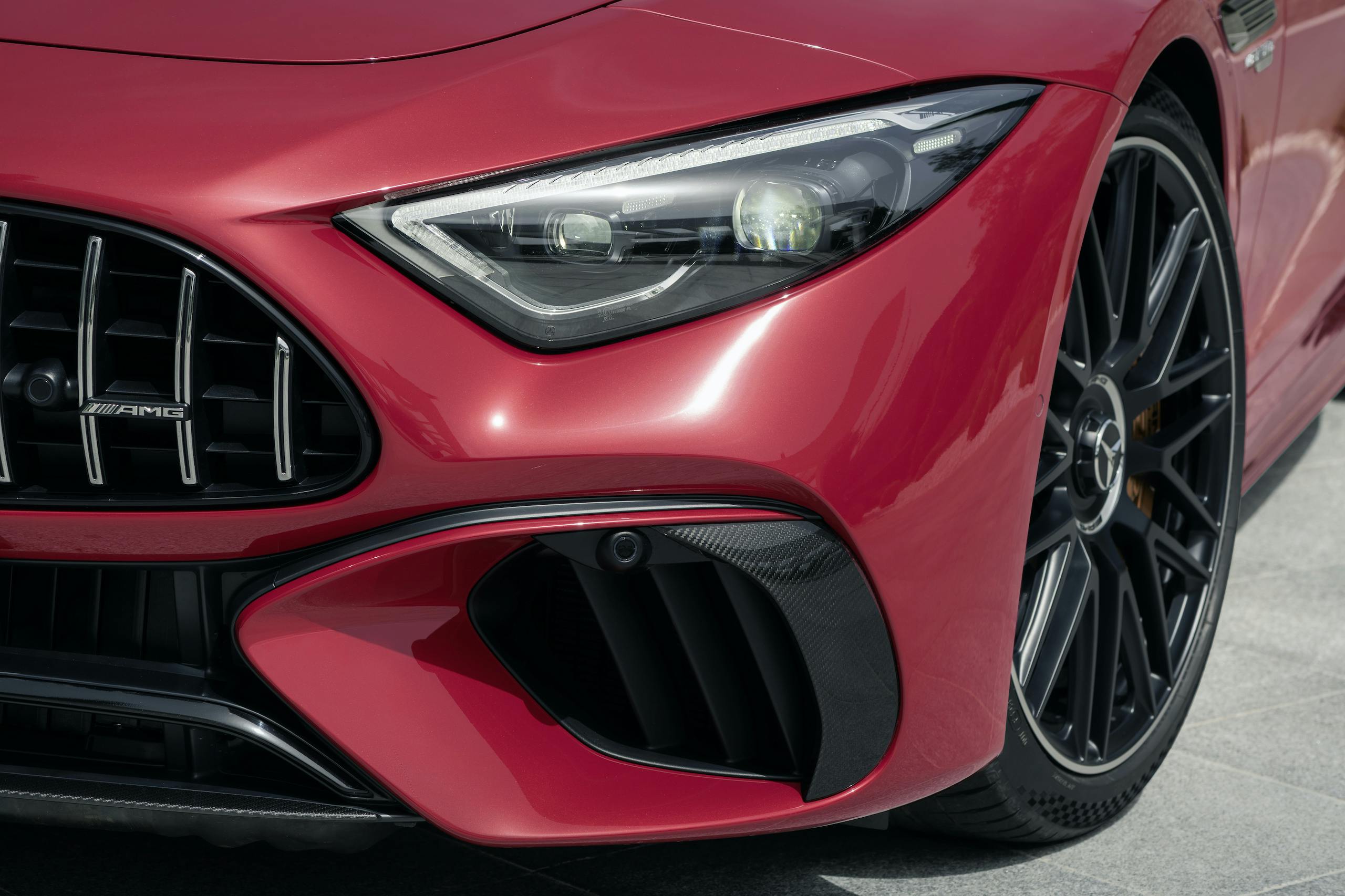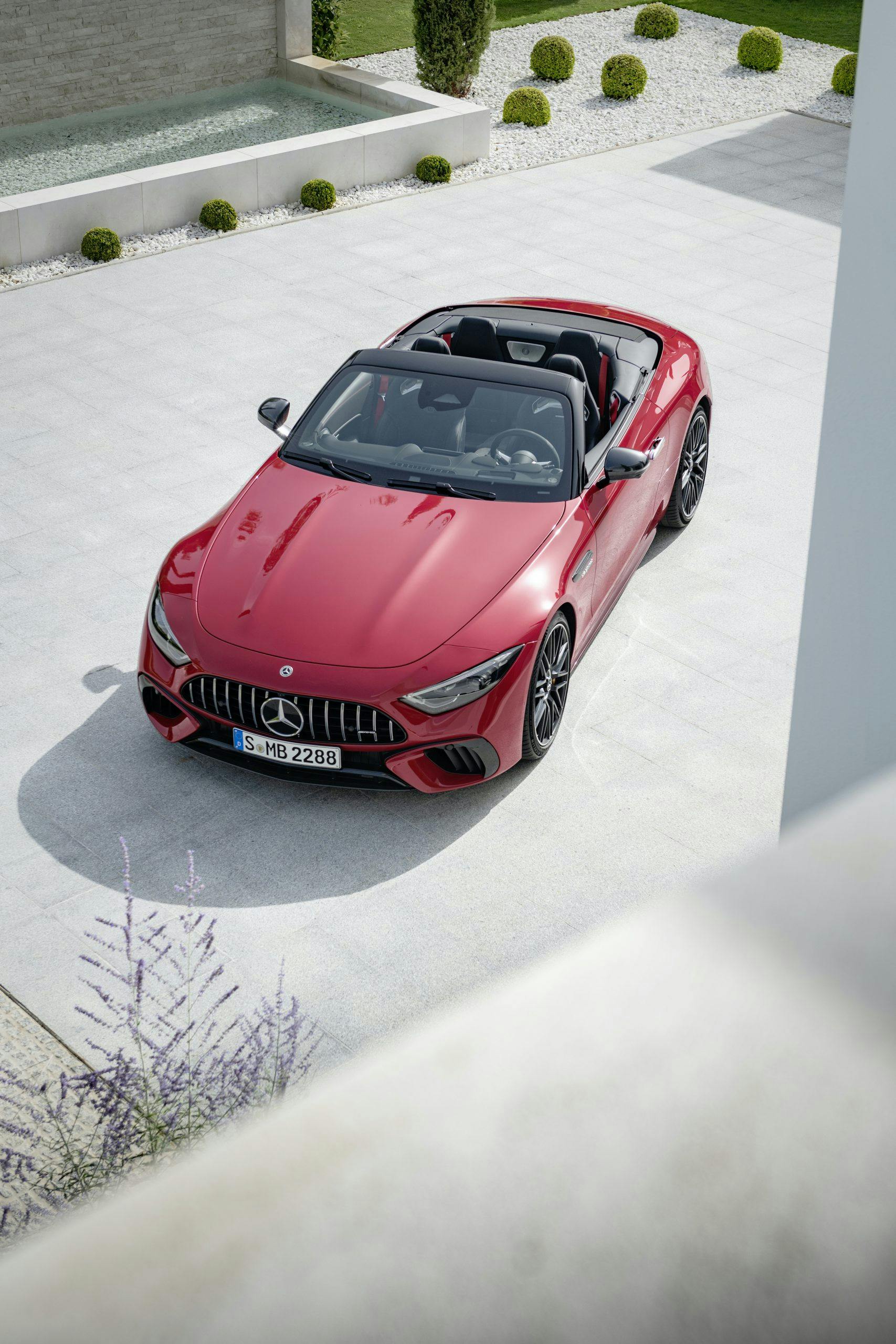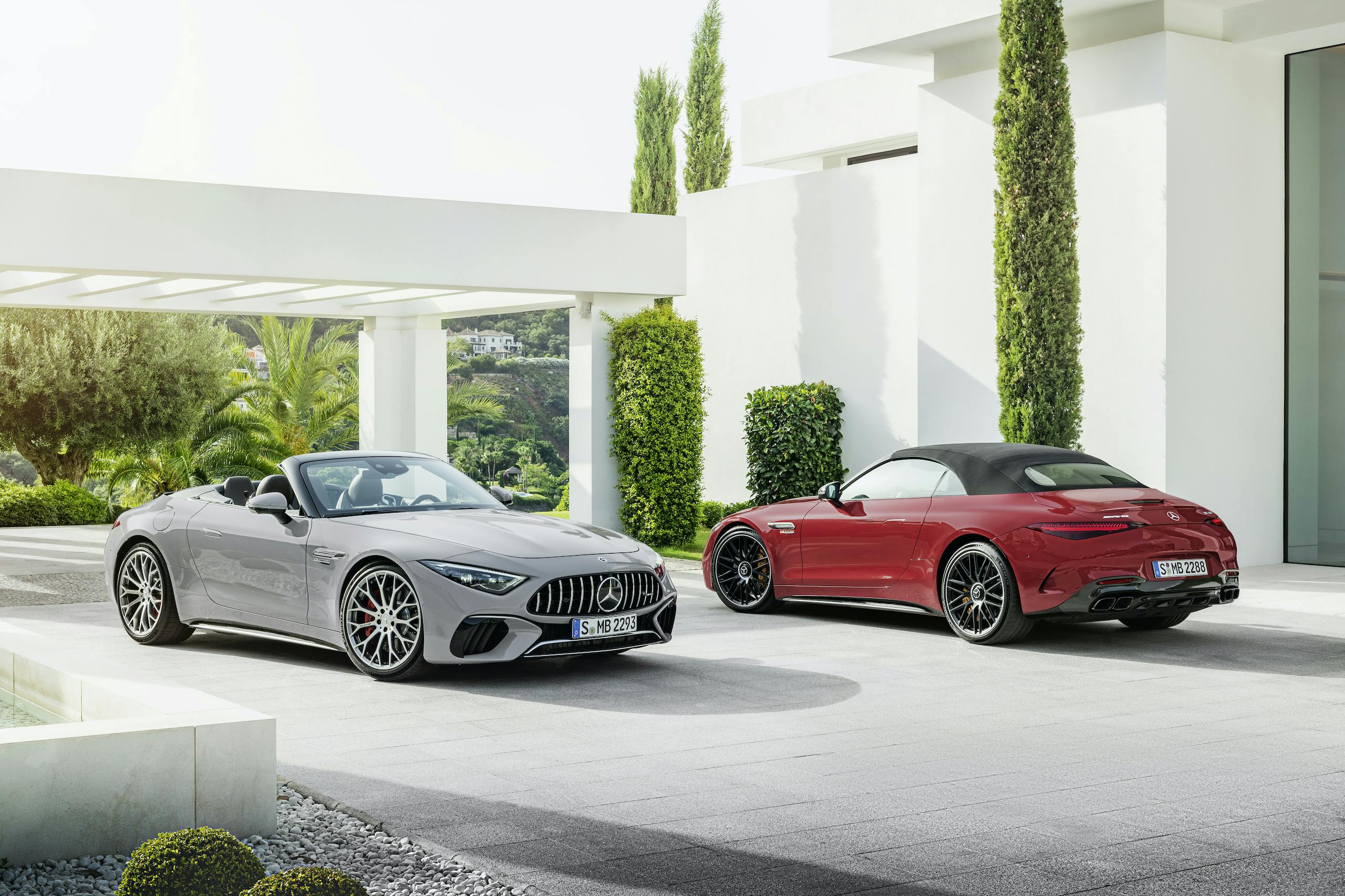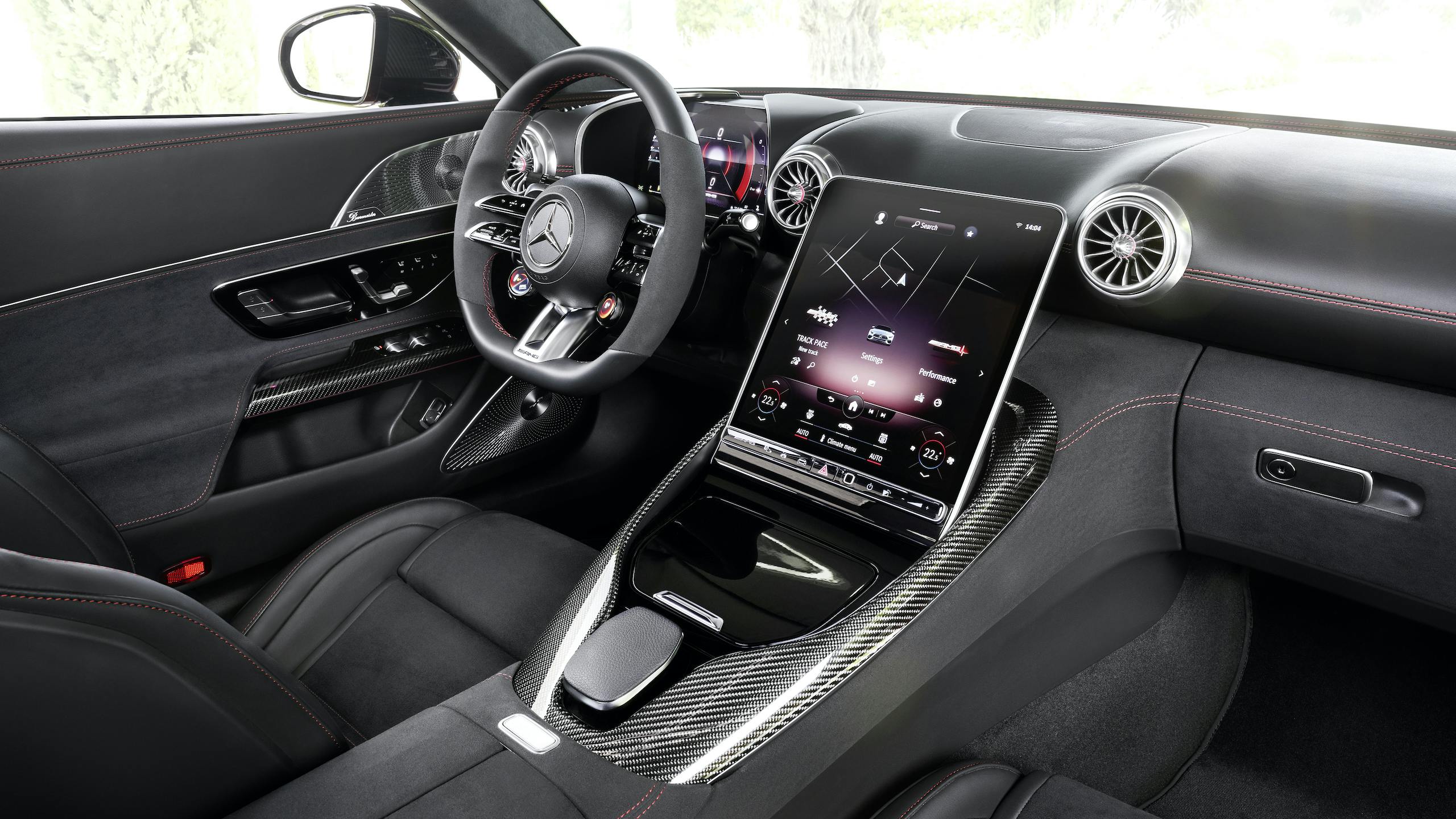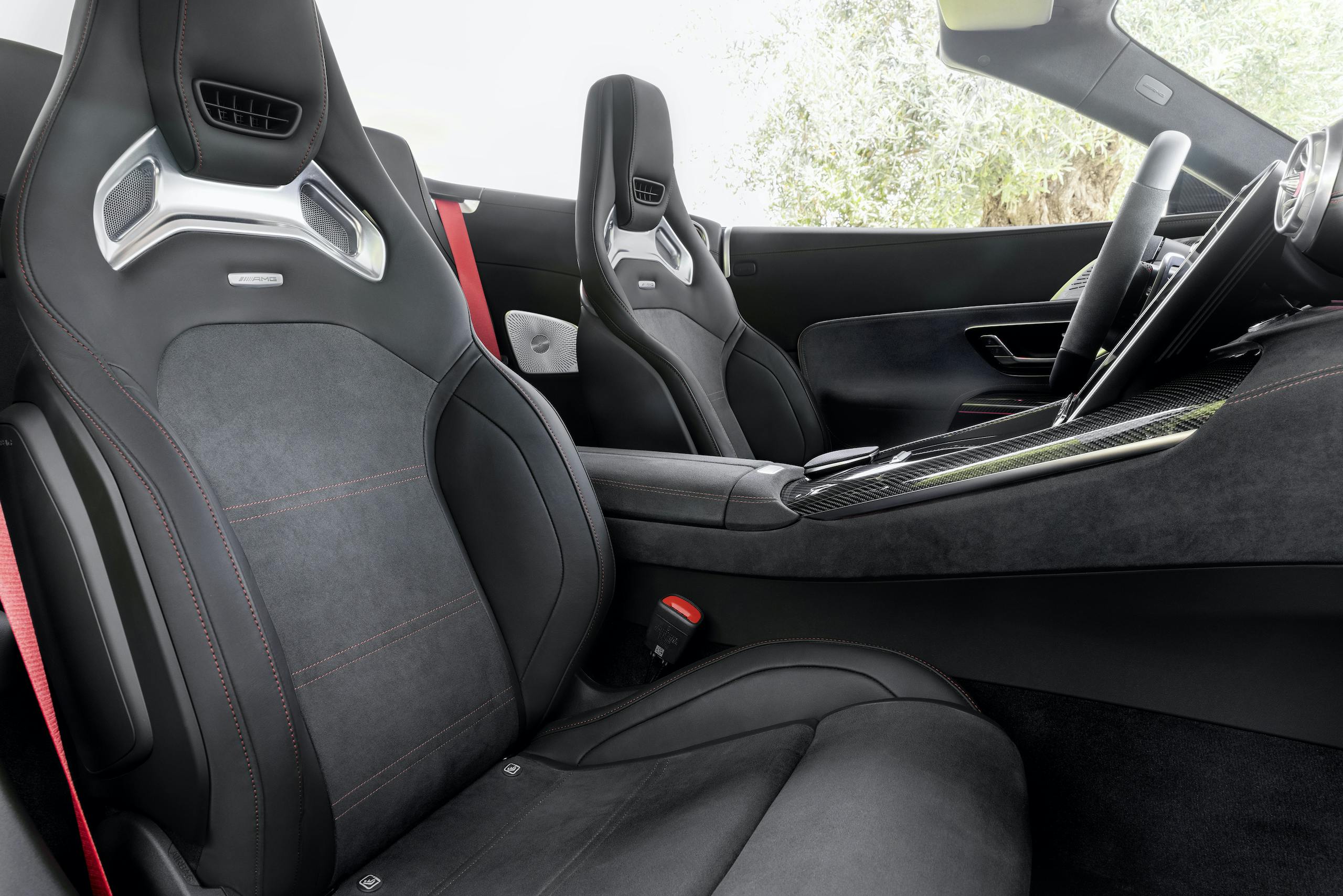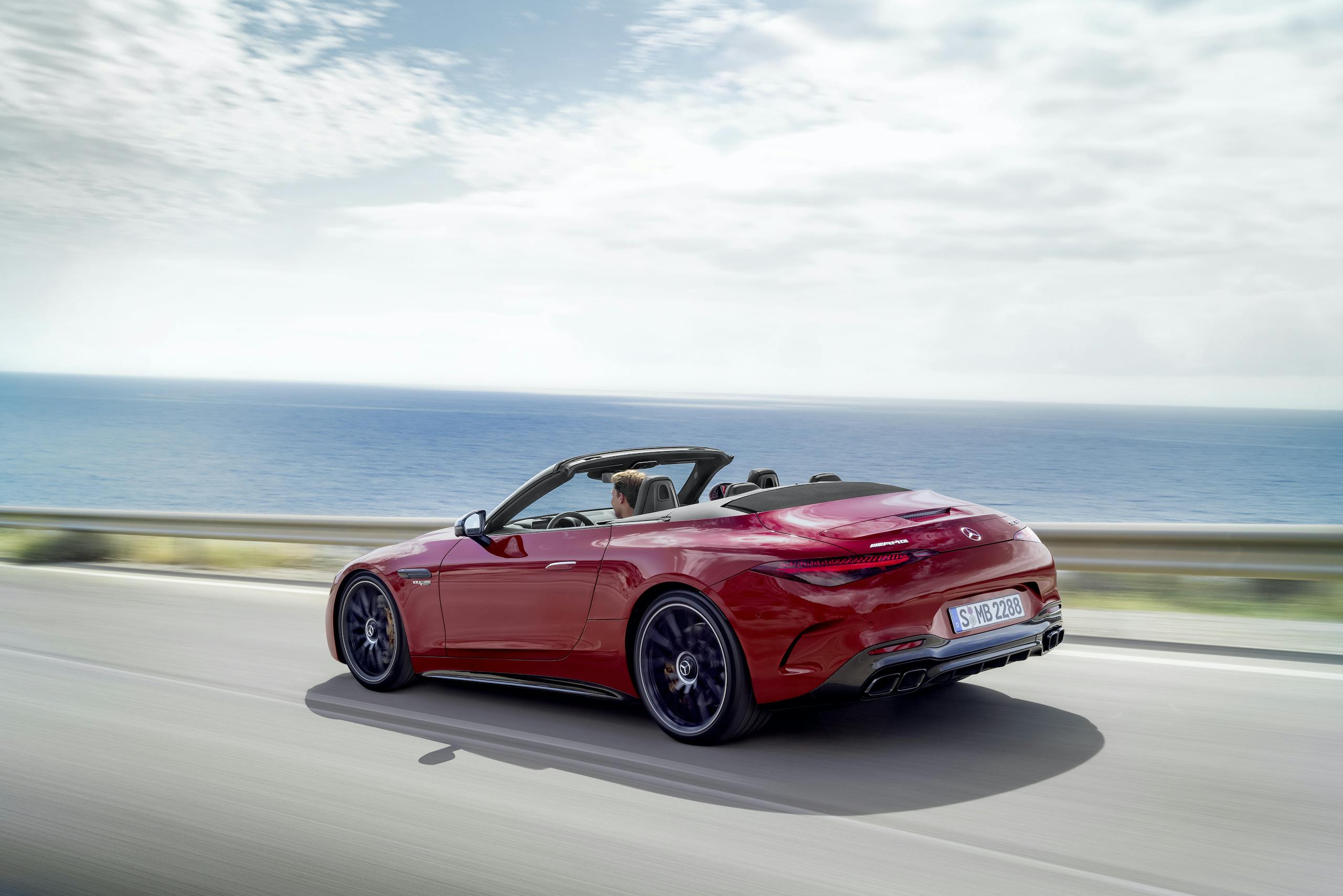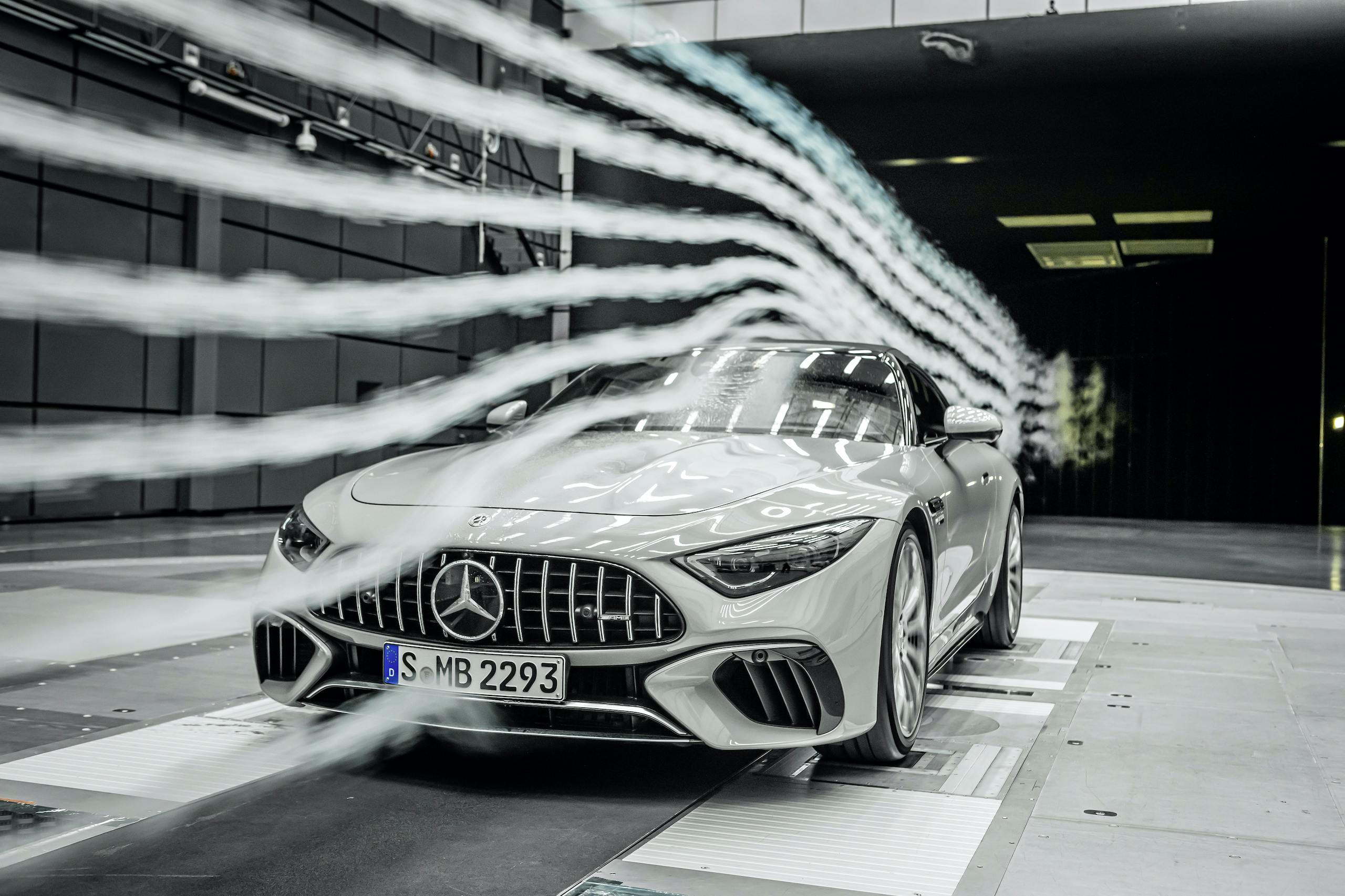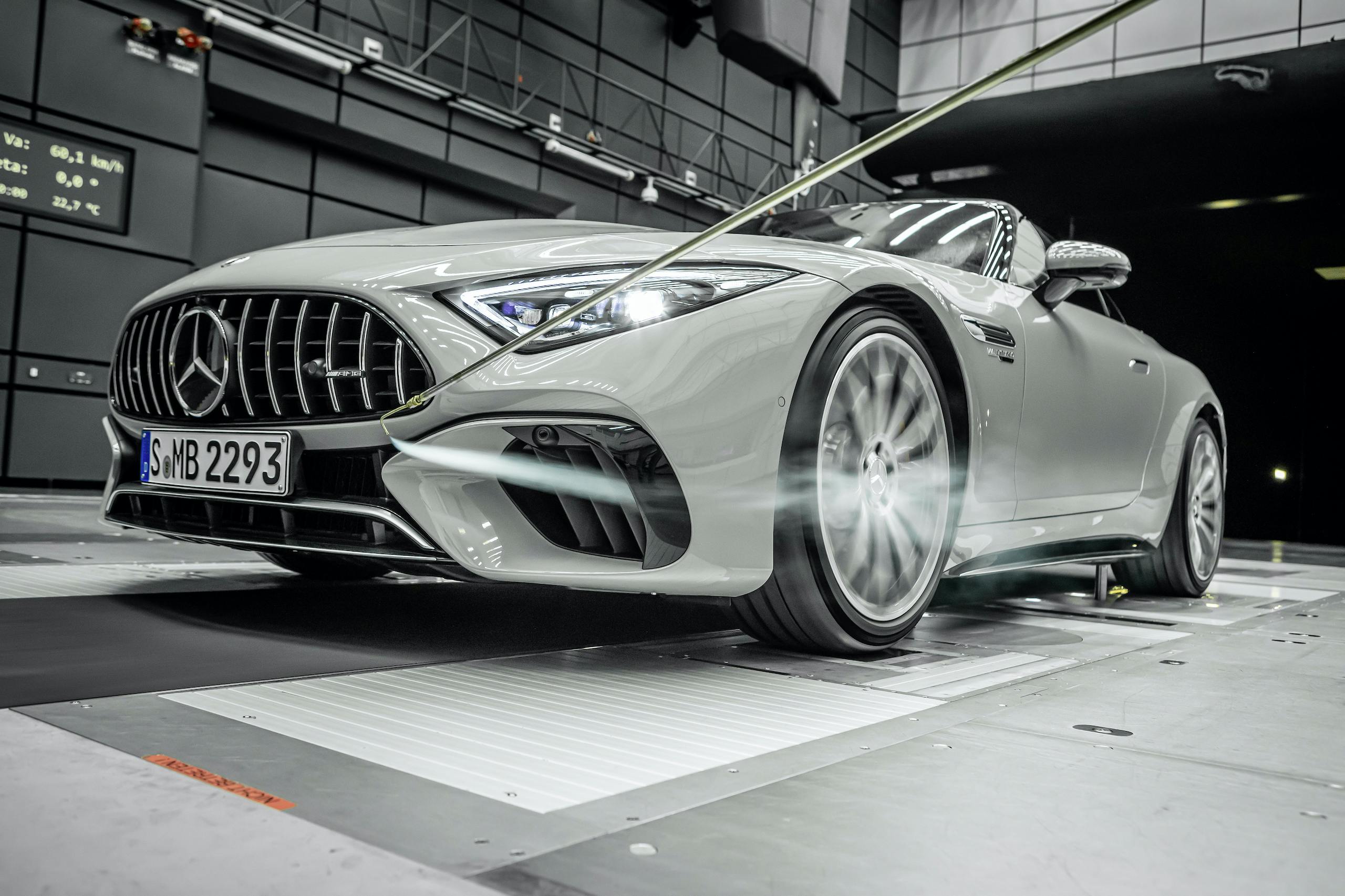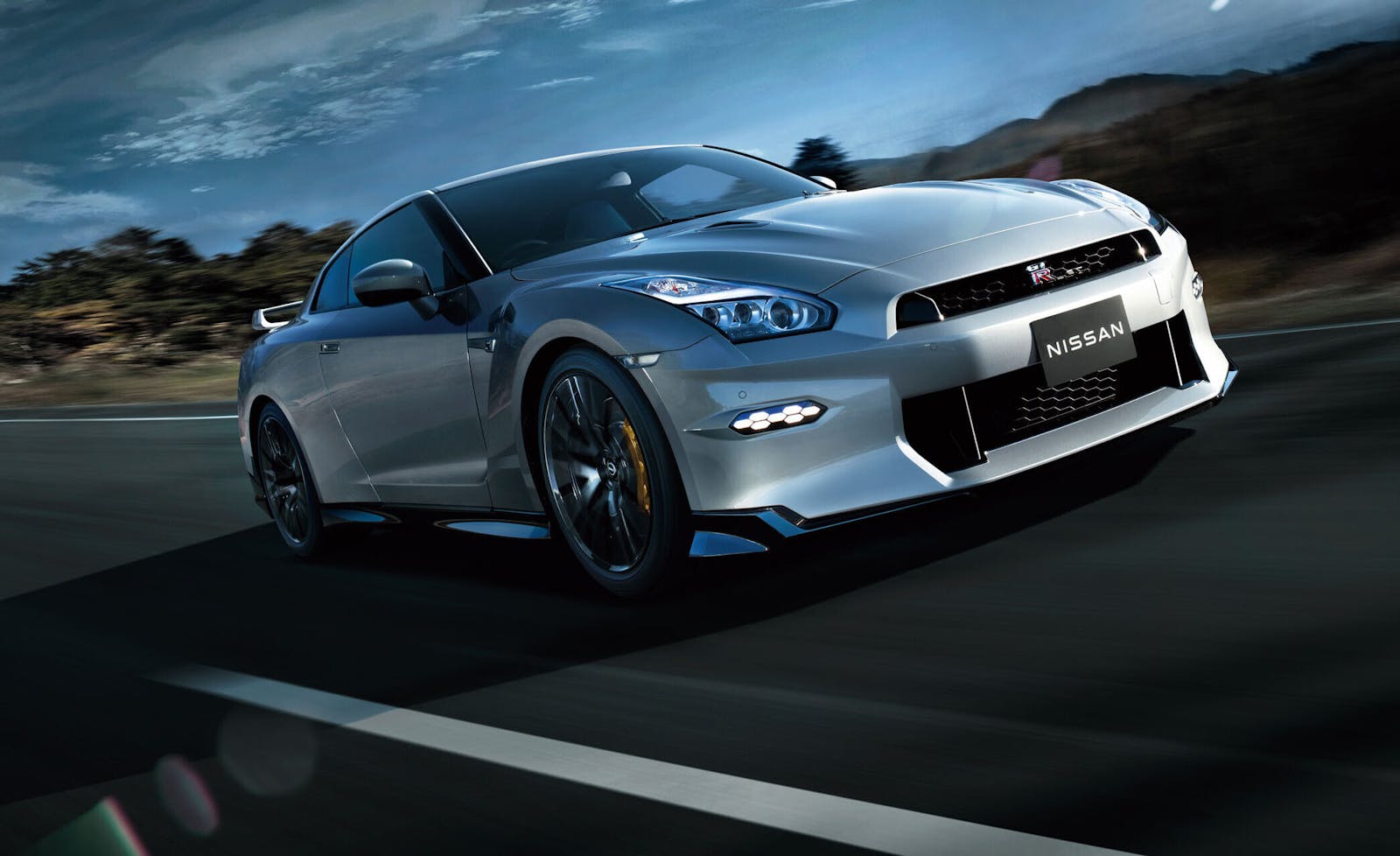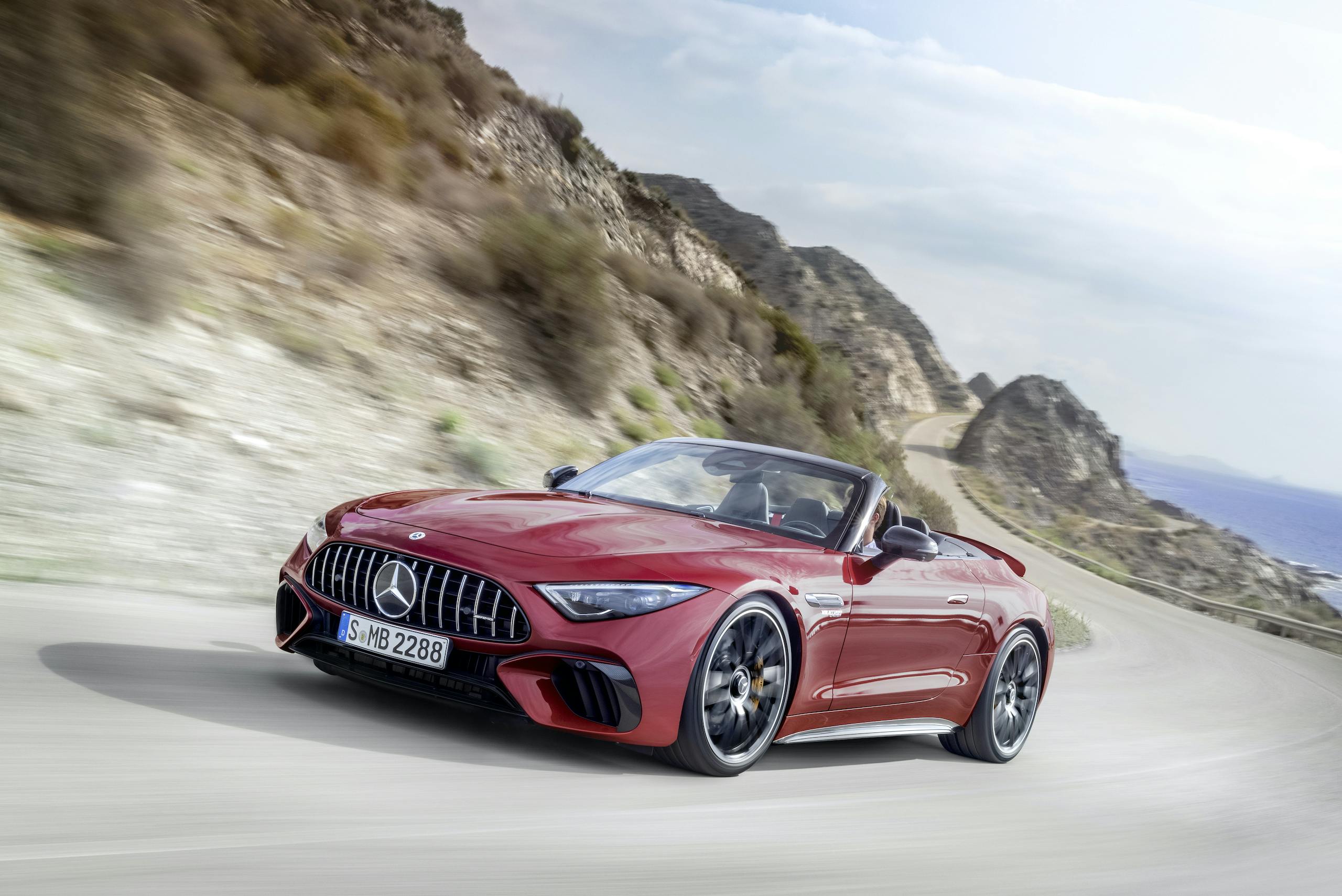Media | Articles
Revealed: The 2022 Mercedes-AMG SL takes a big left turn
Affordable convertibles are all but gone these days, but svelte, luxurious droptops are very much alive. One of the longest-running nameplates in this department is the Mercedes SL, born again for 2022 as the Mercedes-AMG SL. Following in the footsteps of past heroes such as the sumptuous 300 SL Gullwing and the wedge-tastic R129 SL, the new topless Merc promises the same open-air thrills and generous helping of power, albeit this time with a simpler snazzy soft top, and, for the first time in SL history, four driven wheels.
With the demise of the S-Class Cabriolet after the 2021 model year, as well as the imminent arrival of a CLE-Class cab replacing the roofless C- and E-Class, the SL occupies a niche for practical-minded Benz fans shopping in the upper echelons of the segment. This two-door now offers 2+2 seating, should you for some reason be stuck loafing two additional dinner guests to your evening of Malibu’s finest Surf ‘n Turf. It certainly looks the part; the new SL retains styling staples from generations past—long wheelbase (106.3 inches), short overhangs, an endless hood, and a tucked-back passenger compartment.

Impressively, not a single body component is carried over from either the outgoing SL or the raucous AMG GT Roadster, a two-seater whose purpose as a dedicated sports car is now further solidified. Up front, we can see on the SL a nod to AMG with a classic 14-slat grille and squinty LED headlamps. As a nod to early models, the new SL features twin power bulges in the hood. Out back, a neatly tucked and sculpted rear end hides similarly small tail lamps and a five-position deployable rear spoiler.
The SL’s chassis is comprised of a witch’s brew of aluminum, magnesium, carbon fiber, and steel, all carefully placed in service of weight savings, optimal aero, and—in the case of the steel windshield frame and rapid-deploy rollover hoop—safety. The blend of materials offers performance gains, too; Mercedes says that torsional rigidity is up 18 percent over the outgoing SL, while transverse rigidity up 50 percent relative to the AMG GT convertible. These gains translate to a tighter-feeling machine, often a challenge when you axe roof bracing to implement a convertible top.
Speaking of convertible tops, the new SL will come exclusively with a fabric roof, doing away with the previous generation’s folding hardtop. Going this route—as did the BMW Z4—the new SL saved some 46 pounds, but don’t expect to be able to cinch it down with a flick of the wrist, a la Mazda Miata. The soft top is power-deployable at speeds up to 37 miles per hour, and it takes just 15 seconds to operate. Rushing is not the point.
Marketplace
Buy and sell classics with confidence
If you must, though, there’s more than enough power and torque to get around in a hurry. At launch, SL buyers can choose from one of two trim levels—SL 63 or SL 55—both of which will feature a hand-built AMG 4.0-liter twin-turbo V-8. The engine, internally dubbed M177, offers two levels of output: SL 63 buyers will get a whopping 577 horsepower and 590 lb-ft of torque, while SL 55 buyers get a still-respectable 469 hp and 516 lb-ft of twist. Merc estimates 0-60 times of 3.5 seconds and 3.8 seconds, respectively. Power differences are a product of increased boost pressure and different software tuning on the SL 63, according to Mercedes. If a V-8 isn’t your thing, sit tight—Mercedes says a performance hybrid drivetrain is in development.
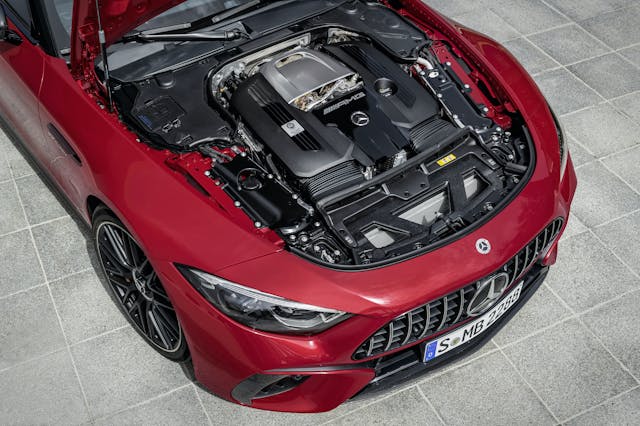
A nine-speed multi-clutch automatic transmission will handle gear swapping duty. In the SL, the transmission features a new wet start-off clutch in place of a conventional torque converter. The swap saves a few pounds and offers sharper acceleration response, especially during load changes. (Translation: a little less hurky-jerky in low-speed stop-and-go traffic.) There’s a tricky rear-axle steering system that can turn the car’s trailing rollers by up to 2.5 degrees. The system turns the rears the opposite direction as the fronts in speeds below 62 mph, and the same direction as the fronts in speeds above 62 mph.

For the first time in its almost 70-year history, all SLs will come exclusively with AMG Performance 4MATIC+ all-wheel drive. The system can shuffle all of its available torque to either axle, depending on driving conditions and the drive mode selected. SL 63s feature an electronically-controlled limited-slip rear differential as well, to better dole out the torque to left and right rear wheels. (The diff is optional on the SL 55, as part of the AMG Dynamic Plus package.)
The all-new SL features a five-link suspension design front and rear—a first for a series-production AMG vehicle. While SL 55 buyers get electronically-adjustable aluminum shocks and lightweight coil springs with conventional anti-roll bars, SL 63 buyers get a more sophisticated setup. It’s called AMG Active Ride Control, and it’s the first of its kind on a Mercedes-AMG model. The system does away with conventional anti-roll bars in favor of a connected hydraulic system running between shock absorbers. It’s similar to McLaren’s high-tech setup from the 2014–2017 650S supercar and should offer better roll control than even the best mechanical sway bars. The setup also incorporates a front axle lift system for navigating those pesky speed bumps. As with the diff, AMG Active Ride Control is included in the AMG Dynamic Plus package for the SL55.
Massive 20- or 21-inch wheels surround dinner-plate sized brakes front and rear. There are standard steel discs measuring 15.3 inches and 14.7 inches, respectively, but you can spring for carbon-ceramic units that are even bigger—15.8 inches up front and 14.7-inches in the rear.
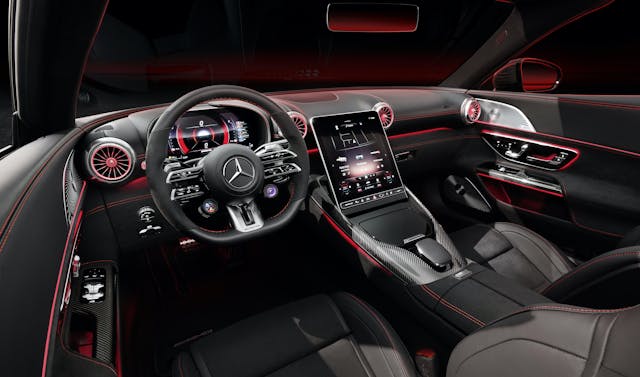
Inside, a familiar mix of ritzy materials and the latest tech create a swanky atmosphere. Mercedes calls it a “hyper analogue”, which is fancy-talk for minimalist design with high-quality materials. (You’ll recognize elements of this interior if you’ve spent any time ogling the new S-Class.) There’s a 12.3-inch digital instrument cluster stuffed below a shapely visor to prevent too much glare from the sun, as well as an 11.9-inch portrait-style central infotainment screen that can tilt from 12 to up to 32 degrees, depending on which angle best remedies glare. A heads-up display is standard on the SL 63, and optional on the SL 55. There’s also high-end Burmester audio for your favorite power ballads, and a high-tech steering wheel with a more buttons and knobs than an Xbox controller.
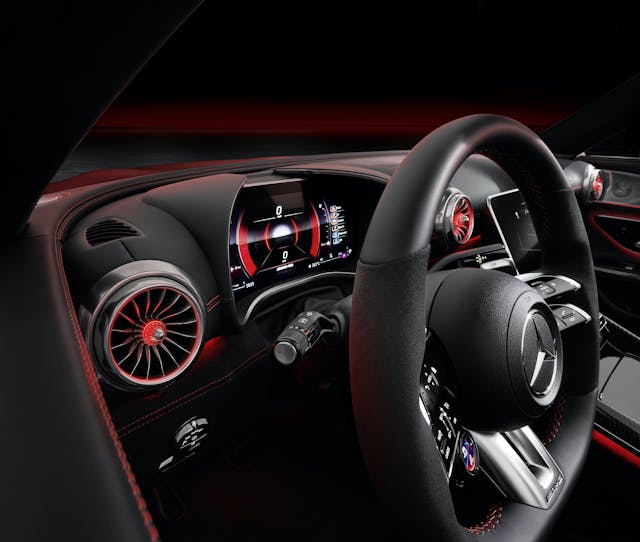
One of those knobs allows you to select one of six drive modes: Slippery, Comfort, Sport, Sport+, Individual, and Race. The latter-most is standard on the SL 63 and optional on the SL 55. Race mode maximizes the aggressiveness of the driveline components and suspension system, while dialing back the digital safety nets that ordinarily work keep the car out of the nearest guardrail. There’s an on-board data logger for track data, which seems strange for a soft-top convertible with four seats. Who is taking this thing to road-course track day?
Customers can choose from 12 paint colors, including two SL-specific shades (Hyper Blue Metallic and MANUFAKTUR Monza Gray Magno), three different soft top hues, and a slew of interior shades. There are six different wheel designs, as well. If you fancy a more sporting place to sit you can spec optional AMG Performance seats, in place of the standard AMG sport seats, but both choices of throne will breathe warm air onto your neck and provide massage functionality.

While some may be dismayed at the loss of a yet another rear-drive sports car, all-wheel drive and four seats makes the new SL a more compelling year-round daily driver. (If not a direct Porsche 911 rival.) As a weekend or warm-weather toy, the AMG GT Roadster won’t have to compete internally. Expect the new 2022 Mercedes-AMG SL arrive in dealerships during the first half of next year, with a yet-to-be-revealed starting price of around $100,000. We’re also holding out for the possibility of AMG-lite SL variants in the future, with Mercedes’ mild-hybrid turbo inline-six and a more affordable price tag.

